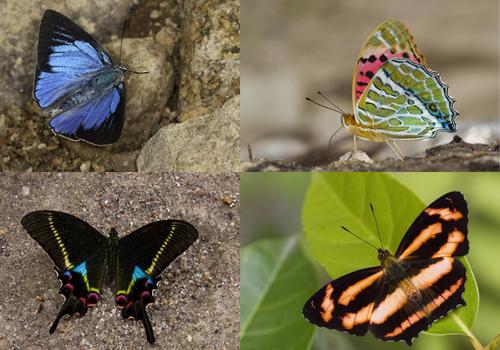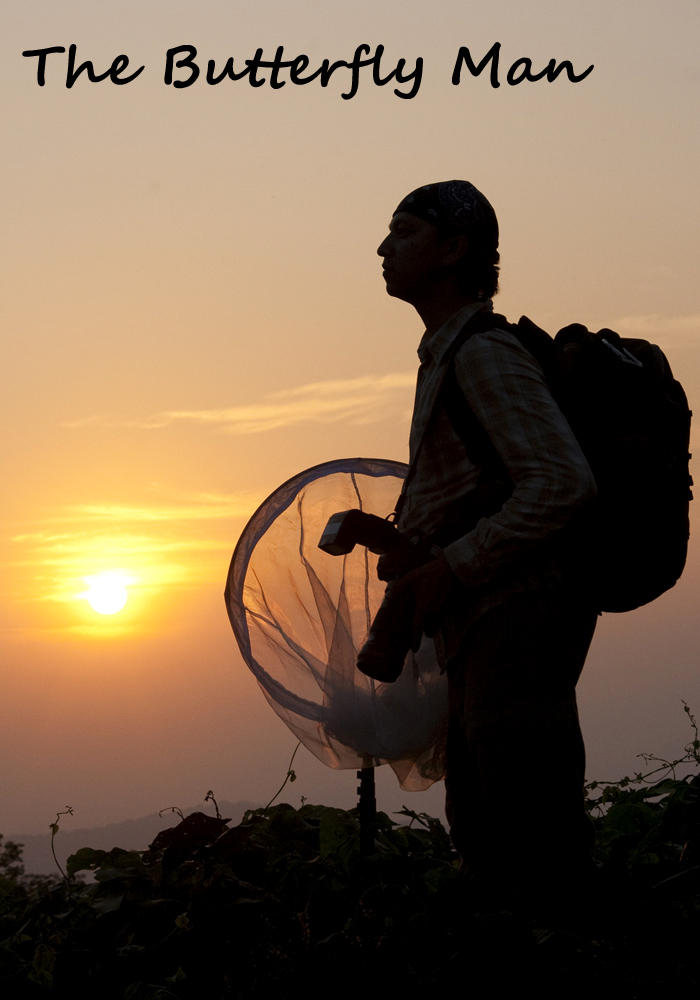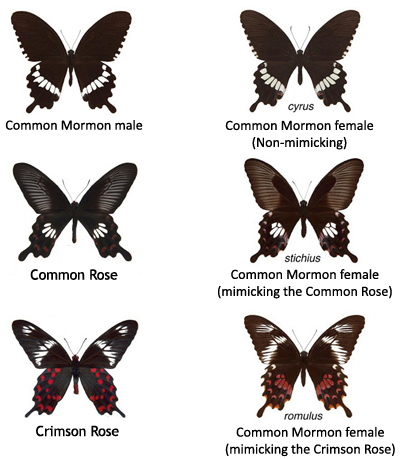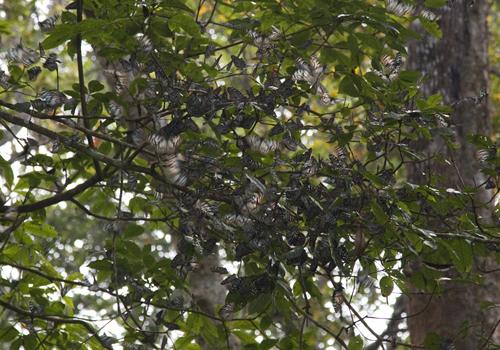The Butterfly Man
A Bachelors degree in Botany and then a Masters in Wildlife Sciences: not many botanists are wildlife biologists. What drew you to wildlife biology?
I always liked plants, although wildlife sciences was definitely my first love. Professor Madhav Pendse, then the head of the Botany Department at Sir Parashurambhau College, was always supportive and encouraging of all my work on wildlife. I would say I finished my Bachelors degree and have come to appreciate plants much more than before, thanks to him. And the second person who influenced me is Milind Watve, currently professor at IISER Pune: because of him, I would say I finished my education and am into research. Looking back, I think the degree in Botany was one of the best things that happened to me in college. I started pursuing work on butterflies much more seriously during that time, though I did not dream that I would study butterflies for a living. Because I had a background in botany, learning about butterflies, their host plants and the forests where they fly became much easier. I put this knowledge to use in my butterfly studies now. After my Bachelors I wanted to learn about wildlife and big mammals, so I didn't want to opt for a regular Masters degree in botany or zoology. That's what led me to do my Masters in Wildlife Sciences at the Wildlife Institute of India at Dehradun.
For your doctoral degree in Integrated Biology at the University of Texas, you looked at the evolution of sex-limited mimicry in swallowtail butterflies (where one gender of a species mimics the wing patterns of another species that predators avoid eating). One of your papers out of that research made a daring proposal: that sexual dimorphism in such species could actually follow Wallace's model of evolution instead of Darwin's. That's really interesting.
Yes. Darwin suggested that sexual dimorphism - the physical differences in males and females of the same species - was a result of male traits being selected in the course of time to function as sexual ornaments to attract mates or weapons to fight off other males. Wallace, however, thought that sexual dimorphism could be the result of the coloring and patterns that better protect females. Not too many studies had considered this possibility and none had tested this hypothesis. For me this was a fairly straightforward but very attractive question because I was open to thinking differently than most other biologists around me, who think of sexual selection on males whenever they think of sexual dimorphism. So when I showed in this paper that it was female traits that were under selection and that the females had changed wing color patterns under natural selection, it was a counter-intuitive, counter-cultural finding - counter-cultural in terms of what most scientists think. I think that is why it received a fair bit of press coverage. The paper turned out to be quite timely because it was published in 2008, the 150th anniversary of Wallace's paper on the theory of natural selection. So, that was a historical landmark, a big moment in the history of biology, particularly of evolutionary biology. Since then there have been more and more studies suggesting that sexual dimorphism has links with natural selection on females.
You then continued working on female-limited mimicry for your post-doctoral work at Harvard too.
Yes, if you look on my website (http://biodiversitylab.org/index/index.php/research/84-research/84-papilio-polytes-mimicry-genetics), there is a project on the Common Mormon butterfly "Molecular genetics and evolution of mimicry in the Papilio polytes butterfly". This butterfly is found across India, Indo-China and southeast Asia and is eaten by predators such as birds. Some female Common Mormons look similar to the male, but others mimic the color patterns of two unrelated species found in these areas: the Common Rose (Pachliopta aristolochiae) and the Crimson Rose (Pachliopta hector). The Roses are unpalatable and therefore not usually eaten by predators. In peninsular India, where the Common Rose and Crimson Rose are common, you see all the three female morphs of the Common Mormon (see inset picture), though the non-mimetic female form cyrus (inset picture, top right) which is similar to the male of the species, is uncommon. But if you go to north-east India or south-east Asia where the Crimson Rose is not found, you will see only two female morphs: the non-mimetic female form cyrus, and the mimetic female form stichius, which mimics the Common Rose and is the most abundant female form in this area. If you go to the Himalayas, cyrus is the only female form, because neither the Crimson nor Common Rose is found there. It is interesting that males in this species are always non-mimetic and females may be mimetic. I think this is because females carry eggs and therefore their abdomens are much heavier compared to males, making them slower in flight and therefore easier prey for birds. This special vulnerability to predation makes females more dependent on mimicry for their survival compared to males. Females have a particular advantage if they mimic locally common toxic Rose butterflies.
So the varieties of mimics in an area depends on the other butterfly species that are found in the same areas as the female Common Mormons...
The species that they mimic - absolutely. Mimicry affects more subtle morphological features as well. If you go to the Philippines, for example, those butterflies don't have tails, but have a similar wing pattern. There again you have a non-mimetic male form, a female form which looks like the male and is non-mimetic, and another female form which is mimetic. What is interesting is that the male and non-mimetic females don't have tails but the mimetic females have tails because the poisonous butterflies they mimic have tails. I looked at the genetic basis of this mimicry: called female-limited polymorphic mimicry (males never show it, and there are multiple female morphs). I think we now know the gene that controls this mimicry, although we will wait for some time and experiments before publishing this finding.
Mimicry sounds like an extremely interesting system to work with.
I use mimicry to answer broader ecological and evolutionary questions because research on mimicry can easily scale from communities to genes, something that cannot easily be done in other study organisms or systems. I think if you work hard and if you have that kind of outlook then you could ask a similarly broad range of questions in any system. But not many people are trying to do that in other systems. We have bacteria as another system which is really good, or Drosophila, to ask certain kinds of questions. But you can't go out and chase Drosophila in the field and get some ecological work done. People are slowly trying to do this, but there are limitations because Drosophila are so small and hard to track. As my PhD co-advisor once remarked, butterflies are at the interface where they are big enough to chase around in nature - so you could do some population and community biology kind of research; and they are small and easy enough to breed in large numbers in the lab so that you can actually do genetic experiments with them. This makes it a very attractive system to study biodiversity. Moreover, hundreds of poisonous butterflies and their mimics are known, so mimicry in butterflies offers a nice, very diverse system to represent biodiversity-related issues.
Apart from mimicry, you have a project specifically on butterfly migration. There are not too many people in India who know that butterfly migrations happen in India as well.
Yes, migration is another exciting area where I have started studying the ecological causes and evolutionary and genetic consequences of migration in peninsular Indian butterflies. The specific group that I study is known as 'milkweed butterflies' (Family Nymphalidae, Subfamily Danainae). Their English name is derived from the milkweed plants such as Calotropis, Asclepias, Tylophora and Wattakaka, on which their caterpillars feed. The Indian milkweed butterfly migration is pretty interesting because unlike the Monarch butterfly (which is also a milkweed butterfly) migration in North America, it takes place as a multi-species migration (see picture at left). The Dark Blue Tiger (Tirumala septentrionis) and Double-branded Crow (Euploea sylvester) make up the majority of migrating swarms, and the Blue Tiger (T. limniace), Common Crow (E. core) and several other species make the rest. How do these species know when to migrate? How are the multi-species swarms coordinated? May be all the constituent species are using same environmental cues, but they could migrate on their own. Yet they're always swarming and migrating together. Other interesting things about this migration are that it is seasonally regular, butterflies follow the same migratory passages every year, and the seasonal-annual migration appears to be driven by the peculiar Indian monsoon rather than the cold winters that drive Monarch and most other well-known migrations. I suspect that evergreen forests of the Western Ghats are the prime habitats for these butterflies but the monsoon is so heavy that it seasonally drives butterflies out. In my lab we are now working out the details of this migration by integrating ecology and evolutionary biology with genetics.
With climate change, some butterfly species have shifted their ranges. Are there signs of this happening in India?
Judging from other parts of the world, I suspect this is happening in India as well but we do not have adequate historical and current information to compare. At present most of what we have are old British records, which were not detailed or precise enough for this kind of study. To deal with this limitation, I have been collecting population data on butterflies since the late 1990s wherever I go. Over the past 5 years whenever I have been in the field I have noted down every butterfly that I have seen. Thus, I have detailed population level information on hundreds of species that I have seen in the past five years, and my colleagues and I are continuing to do this across all parts of India. I encourage serious amateurs and student groups all over the country to do this as well: note down every butterfly seen in the field, obtain geo-referenced data and ecological information associated with that locality and time: latitude, longitude, temperature, altitude and habitat conditions. Once we have that information, we can go back to the same spot five, ten, or a hundred years from now. Then we will be able to compare data across these time intervals and know how butterfly populations are affected by habitat destruction or alteration, pollution, and climate change.

Clockwise, from top left: The Silver Royal, the Large Silverstripe, the Scarce Jester butterflly and the Krishna Peacock. Images: Krushnamegh Kunte.
So do you have plans of starting long-term monitoring projects of some sort?
In some sense I have already started such a monitoring program with my population level butterfly surveys in the Western Ghats and the Eastern Himalaya/NE India. However, so far I have been doing this alone. Now we need to scale up to the entire country and work as a community of 'citizen scientists' along with a network of professional ecologists. My lab is already collaborating with several amateurs, especially Rohit Girotra and S. Nitin, in generating population data on butterflies of Bengaluru. We are also talking to amateurs in other parts of the country, and I hope that more people will join us. We will all be using the same method of generating data, so I think we will have very good baseline information on Indian butterflies in place. This is very important now and it will be in the future.
Yes, I read about your IFoundButterflies project (http://ifoundbutterflies.org) that also encourages citizen science, with your team including not just biologists, but amateurs and people with a passion for butterflies. The project also makes information about butterflies, their lifecycles and pictures accessible to the public.
Absolutely. We have around 12,000 pictures with associated locality and date information on the website. Each photo represents a spot record. We can gather a lot of data from each of those pictures: sexual and seasonal variation in wing color patterning, seasonal occurrence, spatial occurrence and early stages (i.e., eggs, caterpillars and pupae) of butterflies. We can answer a lot of ecological and conservation questions if we have tens of thousands of records. This website is building towards that. We value and specifically seek records of rare and endemic species because data on those species are required much more urgently than those on common species. However, long-term information on common species can reveal patterns that data on rare species cannot, so we focus on common species as well. We have a core team of professionals and amateurs who are crazy about butterflies and who make building this website their business. But we also have dozens of citizen scientists who are contributing images and information, and they are driving the expansion of this website. We have in our team professional biologists, medical doctors, nature resort owners, college lecturers, students, engineers and many others with diverse professions who pursue their interest in butterflies like few professional biologists do. When I look at them and what they are doing, I am reminded of how I was twenty years ago and it feels very nice to see that some of them are going to be much better naturalists than I am. I hope they will be. I'll have competition (laughs) - but I really hope for that. I think that's how Indian butterfly biology, natural history and conservation are going to grow to a healthy state. The IFoundButterflies project is facilitating that change.
Apart from collecting and disseminating information through online media, you also have two books in preparation: the Butterflies of India series. What do they focus on?
The first book will be a subspecies-level systematic and ecological catalog of Indian butterflies. It will be a major step towards summarizing our existing knowledge of the taxonomy, biogeography, natural history, diversity and endemism of Indian butterflies in a single volume. The second book will be a pictorial guide that will illustrate with the help of an estimated 8,000 images the staggering sexual, seasonal, polymorphic and individual variation displayed by Indian butterflies. These books will be important references and a modern foundation upon which we can build our future understanding of the ecology, evolution, diversification and conservation of Indian butterflies.
So it's back to India after nearly 10 years. How is it looking back and how does it feel to be home?
It feels like a completely new life. Science culture-wise there is little difference between what I was doing at Harvard and what I do at NCBS, what is expected of me in terms of the quality of science that I produce, and the resources and research facilities that I have at my disposal. But being in the US, I just could not work on Indian butterflies the way I wanted to. Back in India I can go out and watch butterflies in the field, or have populations in the lab for more rigorous experiments. In the afternoon today I was talking to someone in the corridor when I saw a butterfly feeding on a Lantana plant downstairs. I ran back to the lab, grabbed my net and captured the butterfly, which I am going to use for my genetic breeding experiments. If I want to go to the field for ecological research, I can hop on a plane in the morning and be at my field site in Nagaland or Meghalaya in the evening. I couldn't do that in the US and that is something I really missed. After spending nearly a decade in the US I started to appreciate who I was, the impact that I could have in various fields, the change that I could bring, the difference that I could make. Now that I am back in India, I have started to walk that life, and it feels great!
Visit Krushnamegh Kunte's website to know more about his work and current projects.



Comments
He is indeed the butterfly
Post new comment